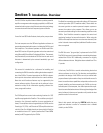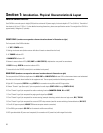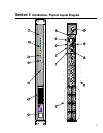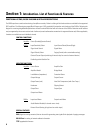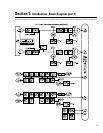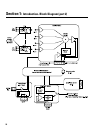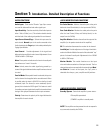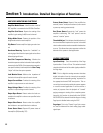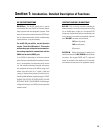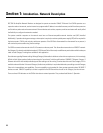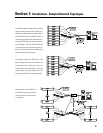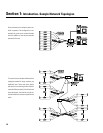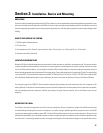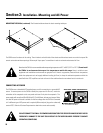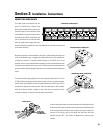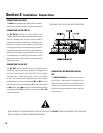
Section 1: Introduction- Detailed Description of Functions
RS-232 PORT FUNCTIONS
RS-232 Port- The RS-232 (serial) port is used to
communicate with the CM16a for Ethernet address
setup purposes and other diagnostic purposes. Most
users will never have a need to access the RS232 port,
but for customized networks and for troubleshooting
system problems, it may be necessary.
For the RS-232 port utilities, see the Operation
section, “Serial Port I/O Interface”. This section
outlines the proper connection and communica-
tion settings required to communicate with the
CM16a via the serial (RS232) port.
If the CM16a is connected to an Ethernet network
where the factory-provided Ethernet address informa-
tion is not acceptable, a configuration utility must be
run. This involves connecting a computer with a prop-
erly configured serial port to the CM16a using a null-
modem type cable (such as a “Laplink” cable) and
running a dumb-terminal program (HyperTerminal is
the Microsoft® Windows- supplied program). DO NOT
CHANGE THE FACTORY SETTINGS UNLESS YOU ARE
CERTAIN OF WHAT YOU ARE DOING! If addressing is
configured incorrectly, the CM16a may not respond to
network control.
CONTACT CLOSURE I/O FUNCTIONS
RLY OUT- This is used for remotely controlling an
electrical device in an on/off manner (such as a cooling
fan, an audible alarm, a light, etc.). An internal SPDT
(single-pole, double throw) relay is controlled by soft-
ware command. Its contacts are accessible at the rear
panel RLY OUT connector and are labeled:
NC (normally closed)
NO (normally open)
C (common)
RLY/TRG IN- Detects the closure (or opening) of a
switch connected to the RLY/TRIG IN terminals on the
rear panel. Also accepts CMOS and TTL logic-level
inputs. An example is the detection of a limit-switch
that indicates an open door on an equipment cabinet.
13



